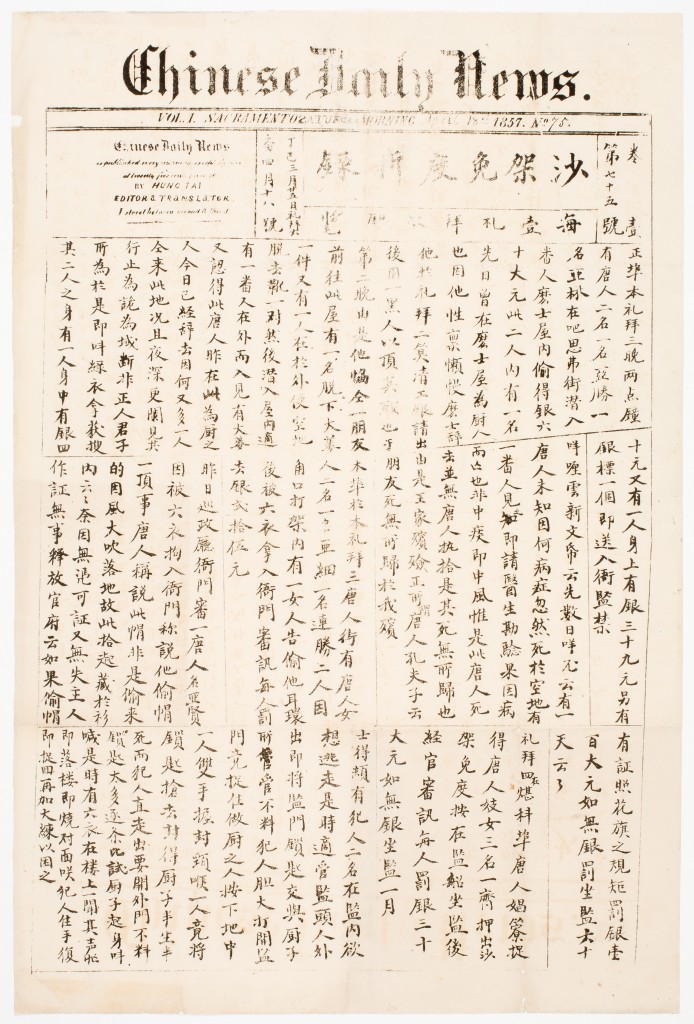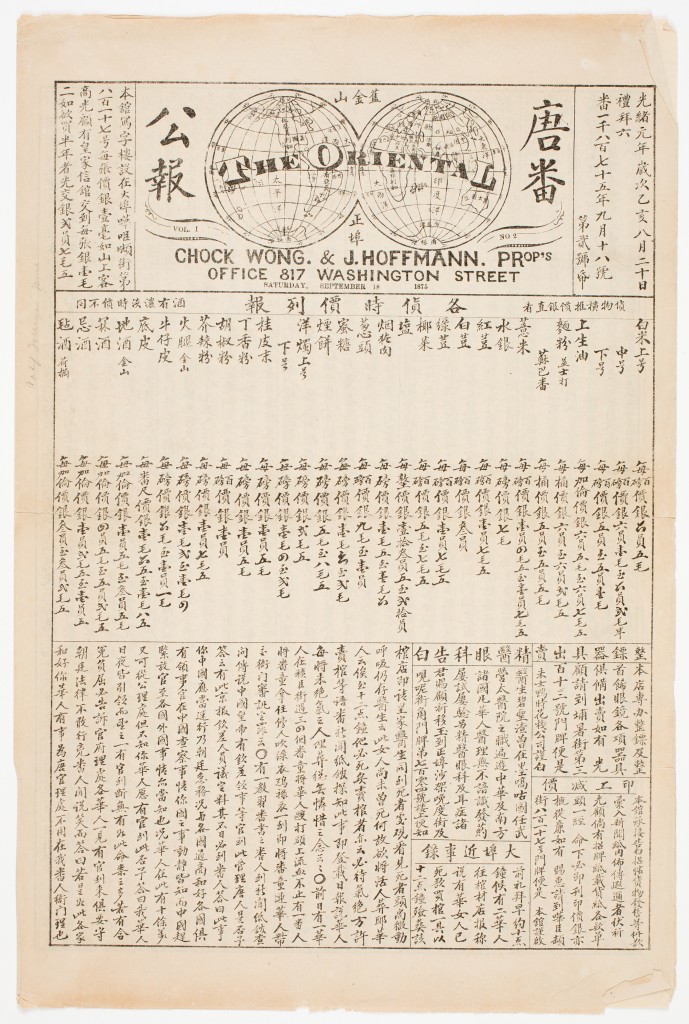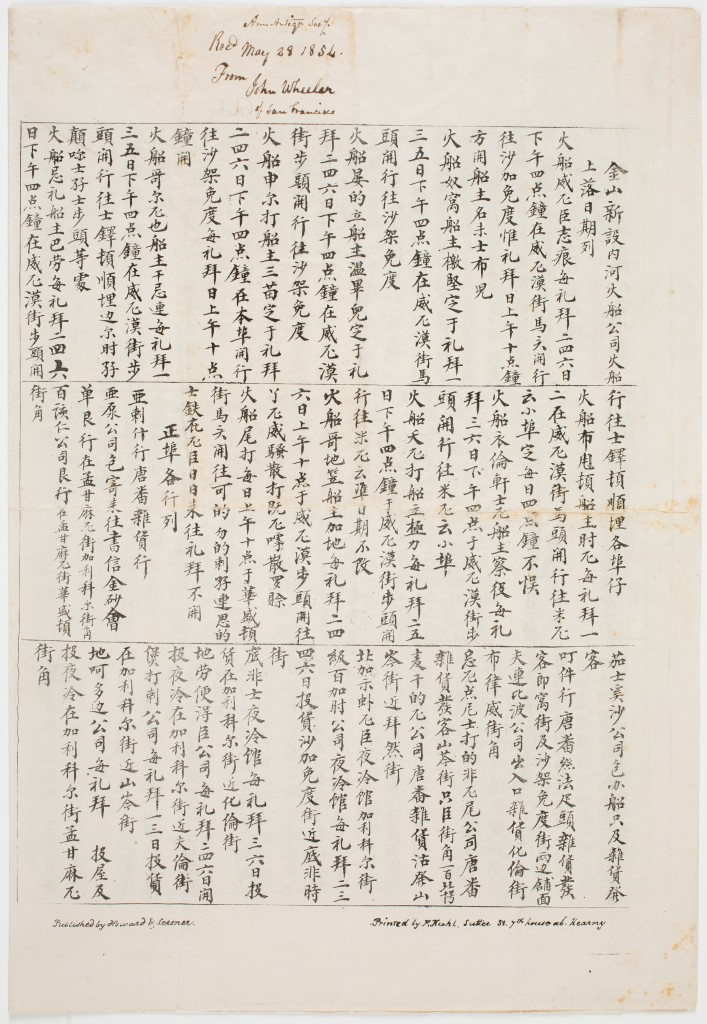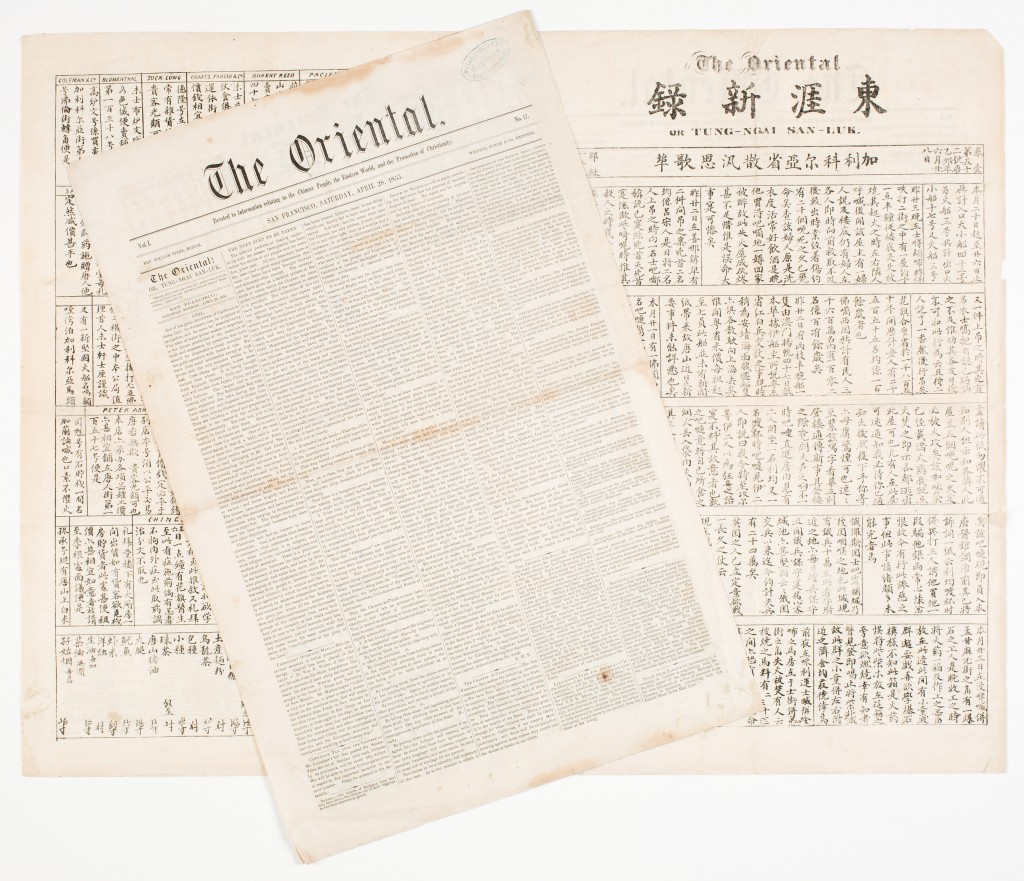“A book holds a house of gold.” – Chinese proverb
AAS has quite a variety of American newspapers in different languages: German, French, Spanish, Italian, Polish, Welsh, Cherokee, Swedish, Norwegian, Danish, Dutch, and Hawaiian. There is one language, however, that provided a unique challenge for printers. All of the newspapers above are letterpress. Each letter is a piece of type picked up by hand from the type case and set in a composing stick until some lines are set. The lines are then slid into a galley tray until an article is completed. The articles are then organized on a composing stone until pages are made up, locked in chases, put in the printing press, and the pages printed.
But what do you do about newspapers in Chinese? How do you publish a newspaper where the language is not based on letters but thousands of characters?
The first Chinese-language newspaper in America was the Chin Shan Jih Hsin Ju = Golden Hill’s News, published in San Francisco in 1854 (above). According to the publishers Howard and Lersner, the purpose was “to relieve the pressure of religious ignorance, settle and explain our laws, assist the Chinese to provide for their wants and soften, dignify and improve their general character.” This paper lasted just a few months.
 The next newspaper in Chinese to appear was The Oriental = Tung-Ngai San-Luk (see above). The first issue came out January 4, 1855 and was edited by the Rev. William Speer, a Presbyterian minister. It lasted just two years. About the same time, a daily Chinese newspaper started up in Sacramento, either at the end of 1856 or the beginning of 1857 (see left). It also ceased publication in 1857.
The next newspaper in Chinese to appear was The Oriental = Tung-Ngai San-Luk (see above). The first issue came out January 4, 1855 and was edited by the Rev. William Speer, a Presbyterian minister. It lasted just two years. About the same time, a daily Chinese newspaper started up in Sacramento, either at the end of 1856 or the beginning of 1857 (see left). It also ceased publication in 1857.
No Chinese newspapers were attempted again until the 1870s when a number of titles began in San Francisco. AAS has twenty-four issues of the San Francisco China News, which began in 1874. We also have eleven issues of The Oriental, founded in 1875 (see below). All of the above titles are quite scarce. Most newspapers in foreign languages aimed at ethnic communities were not saved in large quantities and often not by public libraries and large institutions. I believe many copies of the earliest Chinese–language newspapers in America were saved but were destroyed in the earthquake that hit San Francisco in 1906. Between the earthquake and subsequent fires, the Chinatown district of San Francisco was devastated.
 But back to the problem of printing a newspaper in Chinese. The solution for all of these earliest newspapers was lithography. Instead of using type, they drew an image of the page in reverse by hand on a special stone with a grease pencil. The printer did not need any type because the text was written out. Water was then applied to the stone and seeped in where it was exposed. Then an oil-based ink was used. Where the stone was wet the ink didn’t stick, and where it was written on the ink stayed. A special press was used to transfer the ink to the paper. It was a slower process than letterpress printing, but when you’re working with thousands of characters, it works well.
But back to the problem of printing a newspaper in Chinese. The solution for all of these earliest newspapers was lithography. Instead of using type, they drew an image of the page in reverse by hand on a special stone with a grease pencil. The printer did not need any type because the text was written out. Water was then applied to the stone and seeped in where it was exposed. Then an oil-based ink was used. Where the stone was wet the ink didn’t stick, and where it was written on the ink stayed. A special press was used to transfer the ink to the paper. It was a slower process than letterpress printing, but when you’re working with thousands of characters, it works well.



This is fascinating. Thank you for writing it.